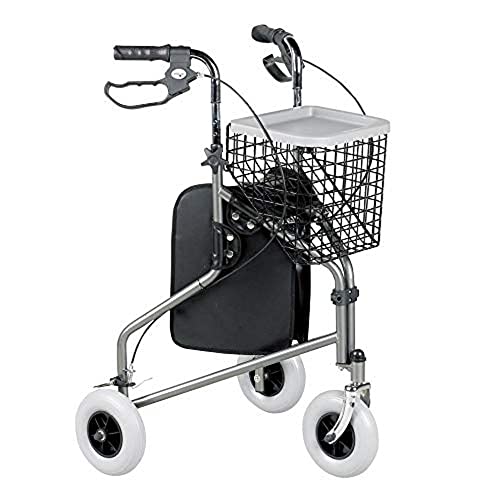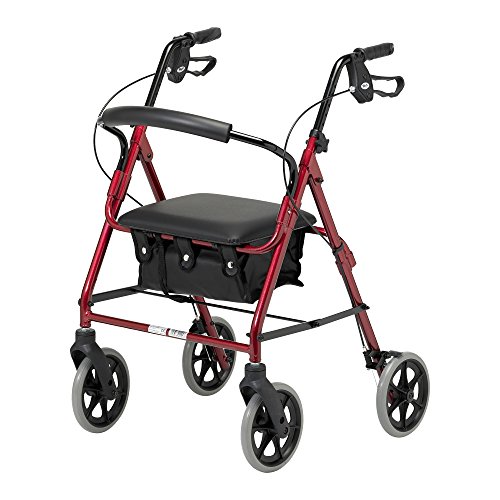
1:1 Consultation
1:1 Consultation 목록
Please post any questions or comments on MAXtremer for our product specialist's response.
TITLE Rollator Folding Tools To Ease Your Everyday Lifethe Only Rollator Fol…
첨부파일
본문
 Locking Mechanism For Use With a Foldable Rollator
Locking Mechanism For Use With a Foldable RollatorMost rollators with automatic brakes have an element of locking or latch to stop them from slamming during storage. This is crucial to avoid a potentially hazardous situation during transportation.
The lock is situated in the middle of the frame. It could be a button or a lever. It is important to understand how to make use of this feature.
How to fold a rollerator
Rollators are great mobility aids that provide stability and support for those who require it. They are convenient, portable and come in a variety of models that can be adapted to different budgets and needs. Some people may be worried about how to safely fold and unfold a rolling walker.
Most modern rollators have easy-to-use mechanisms to fold. They let users quickly fold their walkers with no need for any tools, which makes them ideal for storage and transportation. Additionally the locking mechanism makes sure that the folded walker will not be able to open during storage or transport thus ensuring safety and security for users.
Modern rollator walkers aren't just easy to fold, but feature ergonomic designs that ensure the user's comfort and safety. For instance, they feature comfortable handles, a spacious basket, and a brake lever that is built-in to prevent accidental activation. They are also made from lightweight materials to allow for ease of handling.
Traditional rollators however are heavier and can't fold themselves which makes them difficult to store or transport. Seats are connected to the frame, and cannot be stored in tight spaces or against objects. It is crucial that those who use rollators learn how fold them for easy storage and transport.
The first step to fold a rollator folding - menwiki.men wrote in a blog post, is to find the locking mechanism. This is usually located in the middle of the frame. Once you find it then gently lift or release it according to the instructions provided by the manufacturer. Once the locking mechanism is removed then you can fold the walker by pushing its sides against each other while holding the releases. Continue to do so until the walker is completely folded and securely locked.
You should also check your walker to see if there are any loose parts or signs of wear and tear. Repair any problems immediately to prevent further injuries or damage. In addition, it is recommended to regularly lubricate all moving parts of the walker to reduce friction and ensure the smooth operation.
The Crossbar
The crossbar is a bar that supports the frame and wheels of the rollator wheelchair. The crossbar is typically constructed of metal and connects the handlebars to frame's bottom. The crossbar offers additional strength and stability, and also holds the walker's basket and other attachments. Many manufacturers offer accessories, such as baskets for storage and totes, for their walker model. They can be attached to the front or back of the walker, or they may be placed underneath the seat.
Many walker models have a crossbar that folds in two directions, making them more convenient to carry and store. This is a very important feature, especially if you plan to make frequent trips or long journeys to the supermarket or other places. Additionally, some models of walker come with a removable carry bag that can be used for storage space.
Another key characteristic of a rollator is the brakes, which are usually situated on the handles or the crossbar. There are a variety of brake systems, including push-down and cable loop. The push-down brakes require the user to provide downward pressure on the spring-loaded frame to stop the walker from sliding. This type of system may not be suitable for petite users who may struggle to engage the brakes, or heavier users who may accidentally activate them accidentally.
A cable loop brake system functions much like the brakes on bicycles. It can be engaged by squeezing the handlebars and levers at the same time using both hands. This type of brake system is more suitable for those with limited hand movement, and provides more control than push-down brakes.
Crossbar may also be a reference to a vertical stroke that crosses two other strokes in the letterform. The length, position, and thickness of a crossbar affect the readability of any letterform. This is a significant distinction between serif and nonserif fonts. The crossbar on the small letter e is often referred to as an arm.
The Release Mechanisms
Rollators play a crucial role in increasing mobility and fostering independence for those who are facing physical challenges. These ingenious stability aids redistribute weight evenly across a user's lower body, reducing stress on joints and muscles which allows for comfortable and effortless movement. With adjustable features such as handbrakes and handlebars that can be adjusted, built-in seats, and storage compartments they make it much easier for users to move around their surroundings with ease and confidence. These lightweight portable mobility aids are covered by Medicare and Medicaid to make them more affordable.
Carbon rollators are much easier to transport and store than traditional walkers. They fold in half and can be placed in the trunk. To do this, remove the basket from the frame and then pull up the crossbar. This will reveal a pair of release mechanisms on each side. Then, press the release mechanisms, and push the frame's sides until the walking device shrinks to its smaller size.
The locking assembly attaches to a top, horizontal support arm 218 that joins the two vertically inclined front and rear tubular legs 220 and 228, respectively. Telescoping tubular leg extension 226 and 228 are fixed to the ends of the front and rear tubular legs. These telescoping extensions can be moved between an unlocked or locked position to alter the height of the rolling aid.
Once the extension leg segments are in the correct position the non-sliding handgrip is attached to the end of the lever that is actuated. The housing is connected to the lever using an extension piece that extends and a recess sized to receive the extension piece. The recessed piece and the extension piece provide a fulcrum about which the actuating lever may be pivoted.
When the telescoping legs segments are in the proper position, the locking mechanism activates a snap-button as well as a biasing spring. This arrangement allows for the user to simply switch between the folding mechanism, which allows for a simple storage and transport of the walking aid.
The Locking Mechanism
The invention described herein is a locking mechanism that can be used with foldable walkers or rollators tri walkers. The invention addresses a requirement for a lock assembly for use with such walkers and rollators that are easy to adjust between folded and unfolded positions for those who be unable to move their hands.
Typically, the gadget comprising two side frames and the cross brace connecting them is comprised of two handles. Two hand brakes are mounted onto the handles and each features a pin-actuating plunger that engages with the plunger on the respective cross bar. As the user pushes the hand brakes, the pin actuating plunger is depressed, thereby creating a side frame that can move into a folded position.
One issue that comes with this type of device is that the lever has to be held in position by a person's hand while trying to press the pin actuating plunger. This can be problematic for people with weak hand strength or dexterity. The present invention addresses this issue by incorporating a locking assembly that is operationally connected to the lever that actuates.
As shown in FIG. In FIG. A lock plate is placed within the bore and features an opening that can be adapted to receive a locking end of the pin that locks. A portion of the actuating lever between the handle for force application end and the body attaching portion is arranged to pivot with respect to both body components so that the locking pin can be moved from a position where it blocks rotation of the corresponding tubular leg to a second position where the telescoping leg extension can be extended.
 When the actuating handle moves, the locking pin moves from the first to the second position. In the process, the leg extension telescoping can be pulled away from the side frame and turns it into its folded position. This can be done while the user's hands are still firmly gripping hand grip 24 of the side frame. This feature can reduce the amount effort required to fold and unfold a rollator.
When the actuating handle moves, the locking pin moves from the first to the second position. In the process, the leg extension telescoping can be pulled away from the side frame and turns it into its folded position. This can be done while the user's hands are still firmly gripping hand grip 24 of the side frame. This feature can reduce the amount effort required to fold and unfold a rollator.COPYRIGHT© 2014 Maxtremer. ALL Rights Reserved.
